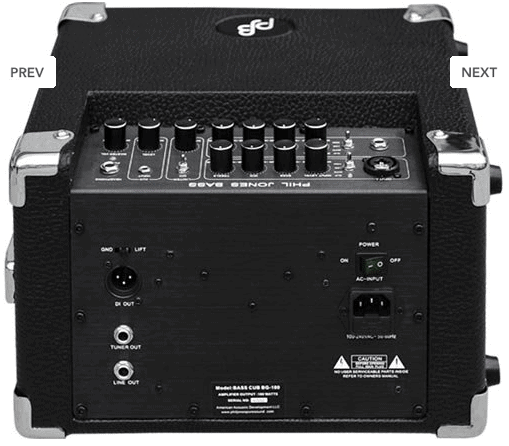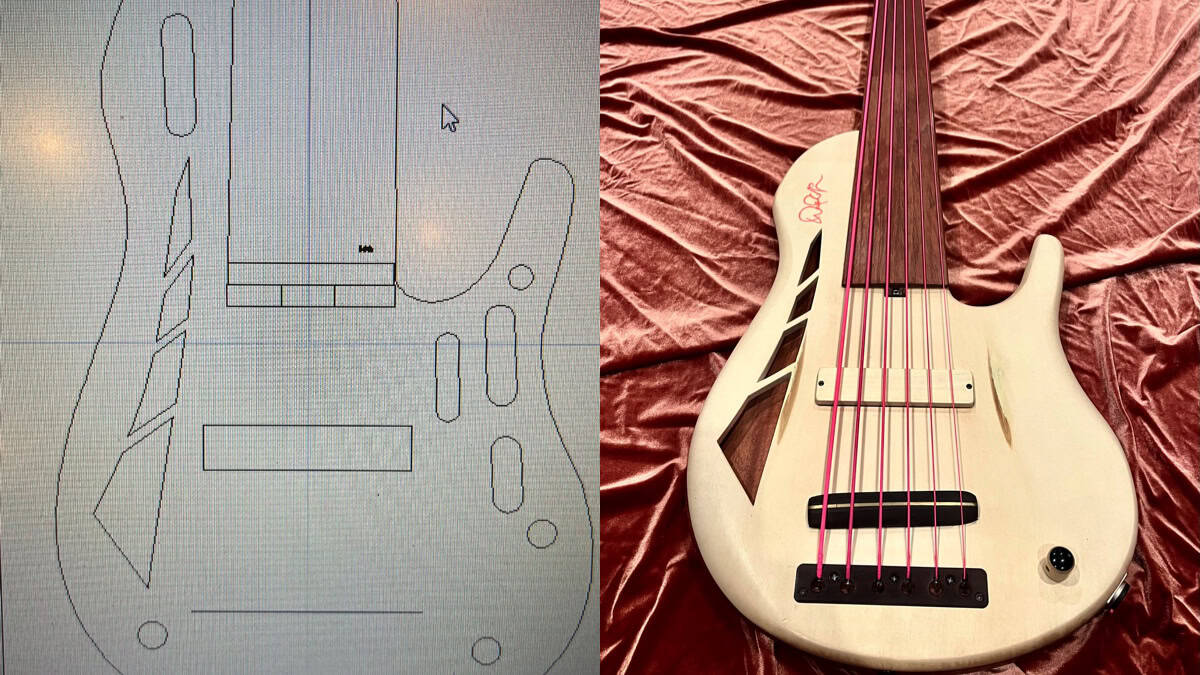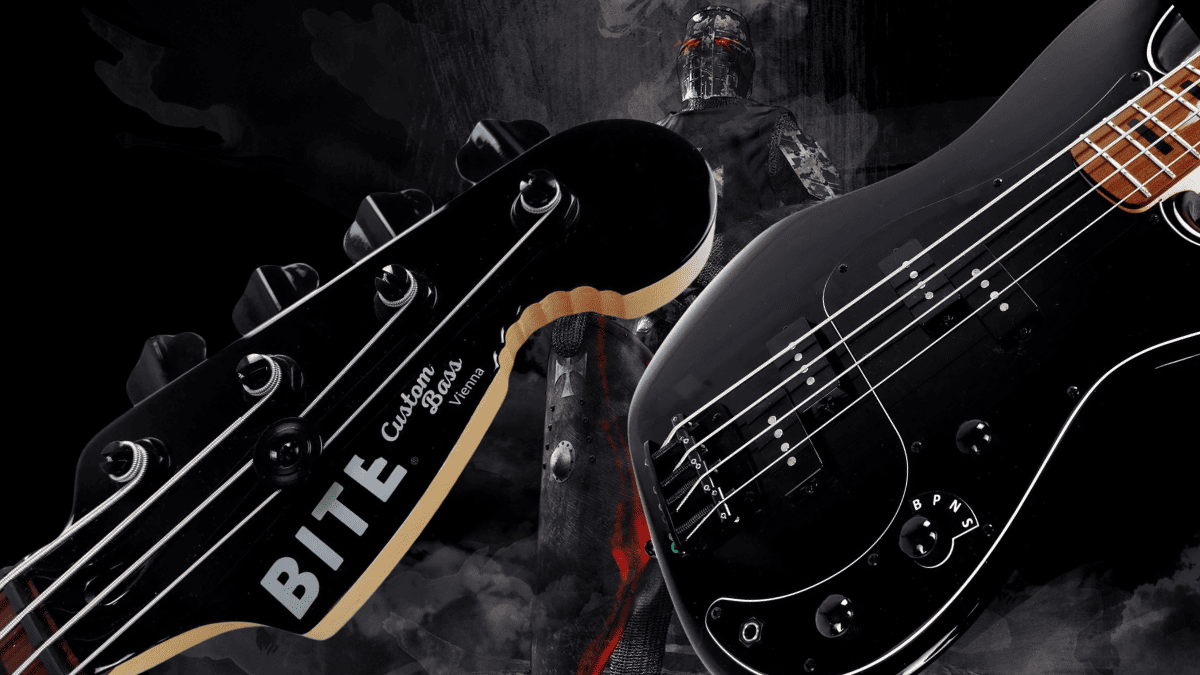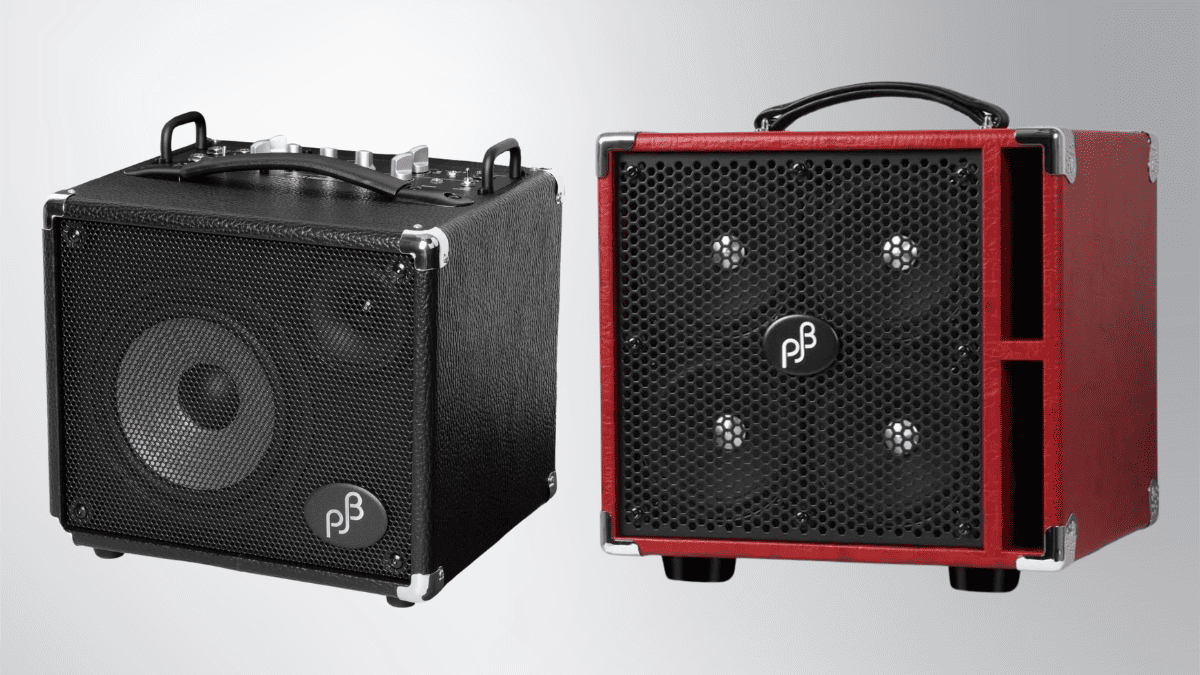Gear Reviews
PJB: Briefcase vs. Bass Cub by Jonathan Moody


I’ve been using the Phil Jones Bass Briefcase for a couple of years now, and love it. Simply put, it’s the amp I wish I had purchased far earlier than I did. But out of curiosity I bought the PJB Bass Cub in October, thinking it was just a smaller, lighter updated version of my beloved Briefcase. What I found out was that the Cub is a completely different amp with its own sound.
I’ve included the specs below. As you can see, there are are some similarities between the two. Both have active/passive inputs, headphone outs, DI, a limiter and are both rated at 100W. However, that’s where it ends, as I’ve found that both are very good at different things and applications.

Type Lightweight bass combo
Size 7.8 x 12 x 10.8 inch (H x W x D)
Net Weight 13.2 lbs / 6 kg
Power output 100W RMS
Speakers 2 x PJB NeoPower Type A
Channels 2
EQ 3 band, limiter
Inputs Active/passive, AUX, Mic
Outputs Headphone, DI, Pre-amp

Type Practice/studio combo with battery power option
Size 15.5 x 6.7 x 17.3 inch (H x W x D)
Net Weight 30 lbs/14 kg
Power output 100W RMS
Speakers 2 x PJB Piranha Type B
Channels 1
EQ 5 band, limiter
Inputs Active/passive
Outputs Headphone, DI, Pre-amp
First the Cub. One advantage that the Cub has is the fact that it’s so light, you can carry it into a gig over your shoulder; the bag that comes with it facilitates this nicely. You can also pick how you want to set the amp up; it has feet for vertical or horizontal placement and even has a stand to allow you to tilt the amp up in the horizontal position. I have used this amp for a couple of theatre runs already, and have mainly used it in the vertical position. However, you can use it in the horizontal position and slide it under your chair, which for a very tightly cramped pit may come in handy.
The Cub also has two channels, perfect for those of us that double on electric and upright, or in my case, upright and ukulele. With channel one accepting an XLR in, this amp is also suitable for those upright bassists that use a microphone in addition to a pickup to get their sound. The one downside is that you cannot switch between channels; they’re both always on (although the second channel does have a “mute” function). Not a big deal for when you’re using two instruments that have volume knobs, but since my ukulele doesn’t, I have to turn the volume down on the amp instead of being able to leave it set when not using it.
The biggest difference I noticed are the speakers. The Bass Cub uses the newer PJB NeoPower drivers, and they are quite a bit different from the PJB Piranhas that I’m used to. The sound is more mellow and natural, and not as hi-fi sounding. The clarity and definition is still there, but does not have that sparkle that the Piranhas are known for. I’d say the NeoPower drivers are what a “traditional” speaker sounds like in the PJB world. I’ve found that I prefer the Neos for when I’m using my NS Design CR-5M electric upright. It brings a warmth to the instrument that makes it sound more authentic (or, as authentic as you’re going to get). I bought the Cub out for a theatre run of “White Christmas,” and the sound of the Neos really helped me sit in the mix better than I think the Piranhas would have. I’m currently using the Cub for a run of “The Last Five Years,” where I’m playing my Warwick Corvette $$ fretless next to an acoustic guitar and three string players. Again, the warmth that the Neos have over the Piranhas is perfect for this application, allowing me to sit in the mix and not on it.
While the Bass Cub has a lot of great features, the Briefcase is one amp that should not be discounted in the slightest. It’s an older, more well-known model in the PJB line. It does only have one channel (doublers would need an A/B pedal to utilize this amp effectively) and it much heavier at 30 pounds. The Briefcase has a 5 band EQ over the Cub’s 3, which I find to be more powerful to help shape my overall sound. Little moves in one of the sliders make a very large and definite tonal shift.
Probably the coolest feature of the Briefcase is that it has the option of being battery powered. I’ve never had the need for this feature (or the time to grab a battery for it), but it’s a brilliant option for those musicians that are busking on a street corner or at a spot where power may not be readily available (I’ve had gigs at folk festivals where I’ve wondered about the safety of those extension cords running through the grass).
The sound that many people (as well as myself) attribute as “the Phil Jones Bass sound” comes down to the Piranha drivers in the Briefcase. These are very tight and punchy, while retaining a very clear and focused lower end. They are extremely articulate and precise, while still letting the distinct sound of your bass come through. I prefer using this amp when I’m doing theatre runs that require an electric bass. The sound is so clear that I can keep the amp at a low volume, and it will cut through the entire pit, allowing me to anchor the show.
The Bass Cub and Briefcase from Phil Jones Bass bring a lot of similar features to the table, while still offering something unique that makes each of these small amps perfect for different situations.
Bass Cub:
Lightweight, easy to carry over the shoulder into a gig
2 channels make doubling easy
Neo speakers bring warmth and more traditional, mellow bass sound
Ideal for situations using acoustic instruments or for more laid back gigs
Briefcase:
Very intuitive and powerful 5 band EQ
Battery powered option, perfect for busking in the summer
Piranha speakers have a brilliant hi-fi sound, perfect for cutting through
Ideal for situations involving electric bass, or anything where that
hi-fi sheen is required/appreciated
For me, the tonal needs and goals of the group I’m playing in will determine which amp gets the call. With either, I still get the transparency and reliability that PJB amps are known for, allowing my bass to sound its best, no matter the gig.
Gear
New Joe Dart Bass From Sterling By Music Man

Sterling by Music Man introduces the Joe Dart Artist Series Bass (“Joe Dart”), named after and designed in collaboration with the celebrated Vulfpeck bassist.
Above photo credit: JORDAN THIBEAUX
This highly-anticipated model marks the debut of the Dart bass in the Sterling by Music Man lineup, paying homage to the Ernie Ball Music Man original that all funk players know and love. The bass embodies many of the original model’s distinctive features, from its iconic minimalist design to the passive electronics.

The design process prioritized reliability, playability, and accessibility at the forefront. Constructed from the timeless Sterling body, the Dart features a slightly smaller neck profile, offering a clean tone within a comfortable package. The body is crafted from soft maple wood for clarity and warmth while the natural finish emphasizes the simple yet unique look.
Engineered for straightforward performance, this passive bass features a ceramic humbucking bridge pickup and a single ‘toaster’ knob for volume control. Reliable with a classic tone, it’s perfect for playing in the pocket. The Dart is strung with the all-new Ernie Ball Stainless Steel Flatwound Electric Bass Strings for the smoothest feel and a mellow sound.

The Sterling by Music Man Joe Dart Bass is a special “Timed Edition” release, exclusively available for order on the Sterling by Music Man website for just one month. Each bass is made to order, with the window closing on May 31st and shipping starting in November. A dedicated countdown timer will indicate the remaining time for purchase on the product page. Additionally, the back of the headstock will be marked with a “2024 Crop” stamp to commemorate the harvest year for this special, one-of-a-kind release.
The Joe Dart Bass is priced at $399.99 (MAP) and can be ordered globally at https://sterlingbymusicman.com/products/joe-dart.
To learn more about Joe Dart, visit the official Vulfpeck artist site here https://www.vulfpeck.com/.
Gear Reviews
The Frank Brocklehurst 6-String Fretless Bass Build

A few months ago, my Ken Bebensee 6-string fretted bass needed some TLC. You know, the one rocking those Pink Neon strings! I scoured my Connecticut neighborhood for a top-notch luthier and got pointed to Frank Brocklehurst, F Brock Music. He swung by my place, scooped up the bass, and boom, returned it the next day, good as new. Not only that, he showed up with a custom 5-string fretted bass that blew me away. I couldn’t resist asking if he could whip up a 6-string fretless for me.
Alright, let’s break down the process here. We’ve got our raw materials: Mahogany, Maple, and Holly. Fun fact – the Mahogany and Maple have been chilling in the wood vault for a solid 13 years. Frank is serious about his wood; they buy it, stash it away, and keep an eye on it to make sure it’s stable.
First up, they’re tackling the Mahogany. Frank glues it together, then lets it sit for a few days to let everything settle and the glue to fully dry. After that, it’s onto the thickness planer and sander to get it nice and flat for the CNC machine. The CNC machine’s the real star here – it’s gonna carve out the body chambers and volume control cavity like a pro.
While the Mahogany’s doing its thing, Frank goes onto the neck core. Three pieces of quartersawn maple are coming together for this bad boy. Quartersawn means the grain’s going vertical. He is also sneaking in some graphite rods under the fingerboard for stability and to avoid any dead spots. The truss rod is going to be two-way adjustable, and the CNC machine’s doing its magic to make sure everything’s just right.
Now, onto the design phase. Frank uses CAD software to plan out the body shape, neck pocket, chambering, and those cool f-holes. I had this idea for trapezoid F-holes, just to do something different. The CAD software also helps us map out the neck shape, graphite channels, and truss-rod channel with pinpoint accuracy.

Once everything’s planned out, it’s CNC time again. Frank cuts out the body outline, neck pocket, and the trapezoid F-holes. Then it’s a mix of hand sanding and power tools to get that neck just how we like it. Oh, and those f holes? We’re going for trapezoids of different sizes – gotta keep things interesting.
Next step: gluing that neck into the pocket with some old-school hide glue. It’s got great tonal transfer and can be taken apart later if needed. Then it’s onto hand-carving that neck-body transition.
For the custom-made bridge, Frank uses brass for definition and Ebony for tonal transfer and that warm, woody sound.
BTW, for tunes, Frank went with Hipshot Ultralights with a D Tuner on the low B. This way I can drop to a low A which is a wonderful tone particularly if you are doing any demolition around your house!
Now it’s time for the side dots. Typically, on most basses, these dots sit right in the middle of the frets. But with this bass, they’re placed around the 1st, 3rd, 5th, 7th, 9th, and 12th frets.
Frank’s got his pickup hookup. Since the pickup he was building wasn’t ready, he popped in a Nordstrand blade to give it a whirl.
It sounded good, but I was itching for that single-coil vibe! And speaking of pickups, Frank showed me the Holly cover he was cutting to match, along with all the pink wire – talk about attention to detail!
A couple of things, while it is important for me to go passive, it is equally important for me to just go with a volume knob. Tone knobs are really just low-pass filters and the less in the way of a pure sound for me, the better.
Finally, it’s string time! As usual, I went for the DR Pink Neon strings. Hey, I even have matching pink Cons…Both low tops and high!
Once we’ve got everything tuned up and settled, we’ll give it a day or two and then tweak that truss rod as needed. And voila, we’ve got ourselves a custom-made bass ready to rock and roll.
I want to thank Frank Brocklehurst for creating this 6 string beast for me.
Gear Reviews
Review Transcript: BITE Custom Bass – The Black Knight PP Bass

This is a written transcript of our video review of the BITE Custom Bass Black Knight PP Bass originally published on March 4, 2024
BITE Custom Bass – The Black Knight PP Bass Review…
Bass Musician Magazine did a review on a Steampunk bass from BITE Guitars about three years ago, it was an amazing instrument, and we were very impressed. Now we’re happy to bring you another BITE bass, the Black Knight PP.
Everybody needs a P-type bass, it’s the standard of bass. If you’re recording, they want you to have a P bass. So why not have something that gives you a little more by having two instead of one P pickup. That’s the idea of this bass, it’s the first thing that leaps out: the double P pickup configuration.
Installing two of their 1000 millivolt split-coil pickups, BITE then went one step further and wired them up in a 4-way parallel/series circuit, a look at the controls reveal a 4-way rotary selector:
The first position, marked “B”, gives you the bridge pickup by itself.
The second position, marked “P”, gives you the bridge and neck pickups in parallel mode, that’s the traditional J-type circuit, it reduces output due to the physical law of parallel circuits.
Position number 3 is marked “N”, it gives you the neck pickup by itself.
And finally, number 4, marked “S”, gives your bridge and neck in a series (humbucking) mode which adds up resistances and thus boosts output. The other two controls are master volume and master tone.
What’s more, like every BITE bass, this one also has a reinforced headstock heel designed to give it extra output and sustain. The BITE website features a graph and explanation of what they have done to the heel, as compared to traditional headstocks.
A look at the body reveals a beautiful Black Blast body finish and underneath that we have alder wood. The bass has a matching headstock with a 4-in-line tuner setup and the traditional bite out of it, so everybody will know what kind of bass you’re playing. The pickguard is 3-ply black, the neck is vintage tinted hard maple and it has a satin speed finish at the back which keeps your thumb from sticking.
On top of that, there’s a clear-coated roasted black locust fretboard with black blocks marking the frets. The nut is a black Graph Tec nut, we’ve got diamond dome control knobs, and the tuners are lightweight compacts with cloverleaf buttons and a 1:17 ratio precision gear. The bridge is a Gotoh brass bridge with 19-millimeter string spacing.
Overall measurements: we’ve got a standard 34″ scale, a 1.65″ width nut and a C neck profile. This bass weighs 8.2 pounds, or 3,7 kilograms for our metric friends, and it uses standard 18% nickel silver frets.
Taking a closer look at the sound, this bass is a joy to play. The BITE proprietary 1000 millivolt pickups deliver an extraordinary amount of output which is surprising considering this is a passive instrument. You may even want to set your amp to active mode because of all of the juice you’re getting out of this guy.
The tonal possibilities are very versatile, it’s a straight P if you want but also much more with those different arrangements of the circuitry. So why have multiple basses when you’ve got one that can give you your basic P plus a lot more?
To sum it up, the Black Knight PP is an amazing instrument. The attention to detail that BITE puts into their basses is second to none. This bass is also amazingly balanced and gorgeous to hold and feel with the satin neck finish.
For more information, visit online at bite.guitars/product/black-knight-pp
Bass Videos
Reviews: Phil Jones Bass Compact Plus 450 and Bass Engine 17

Phil Jones Bass Compact Plus 450 and Bass Engine 17 Reviews…
In this issue, we take an in-depth look at two new amps from Phil Jones Bass, the Compact Plus 450 and Bass Engine 17.
For more information, visit online at pjbworld.com
Bass Videos
Video Review: BITE Custom Bass – The Black Knight PP Bass

BITE Custom Bass – The Black Knight PP Bass Review…
I am sure many of you saw my review of the Snobby Steampunk Bass from BITE Guitars back in February of 2021 and will remember what a remarkable bass it was. BITE has been building custom basses since 2019 and has a unique custom approach where you can configure your bass to your specs.
I am very excited to have another Bass From BITE Guitars in my hands, The Black Knight PP Bass!
The need for a P-Bass in one’s armamentarium is pretty standard for bass players and I recall chatting about this with Marty O’Brien about a year ago. It turns out that Marty and BITE Guitars got together and came up with this excellent configuration that gives you a P-Bass with a whole lot more. Marty even played his own Black Knight PP bass at the 2024 NAMM show. You can see his review here.
Join me as I take an in-depth look at this very cool instrument and share all the details.
Here is The Black Knight Bass from BITE Guitars!
For more information, visit online at bite.guitars/product/black-knight-pp



































